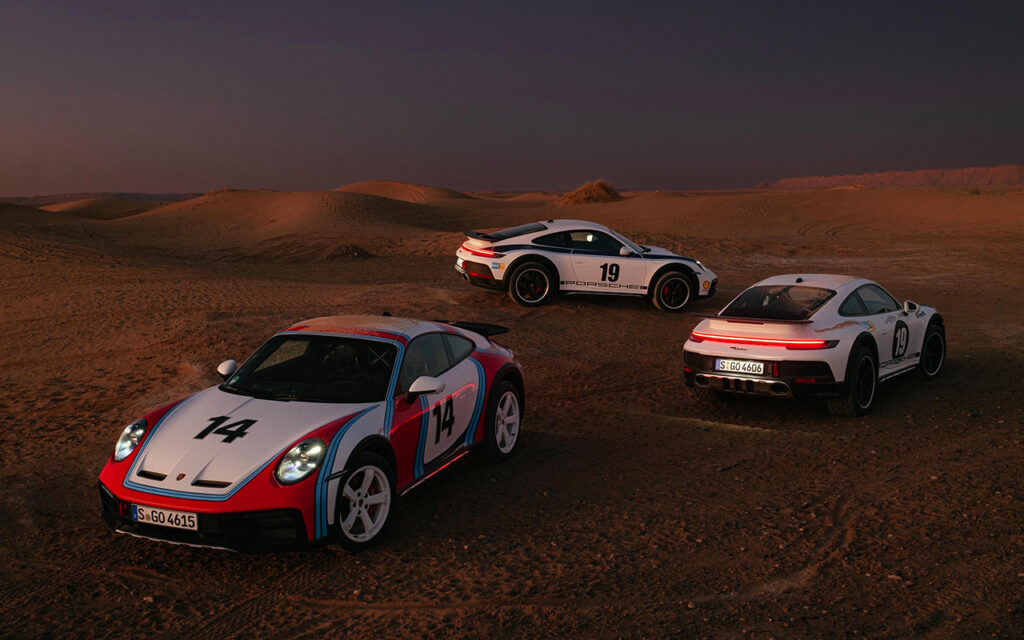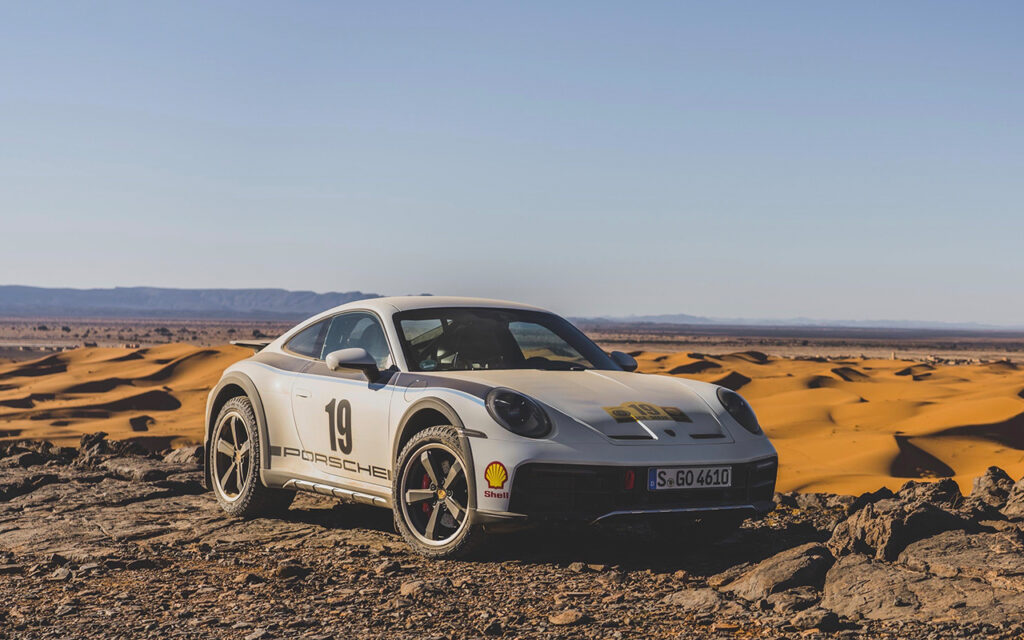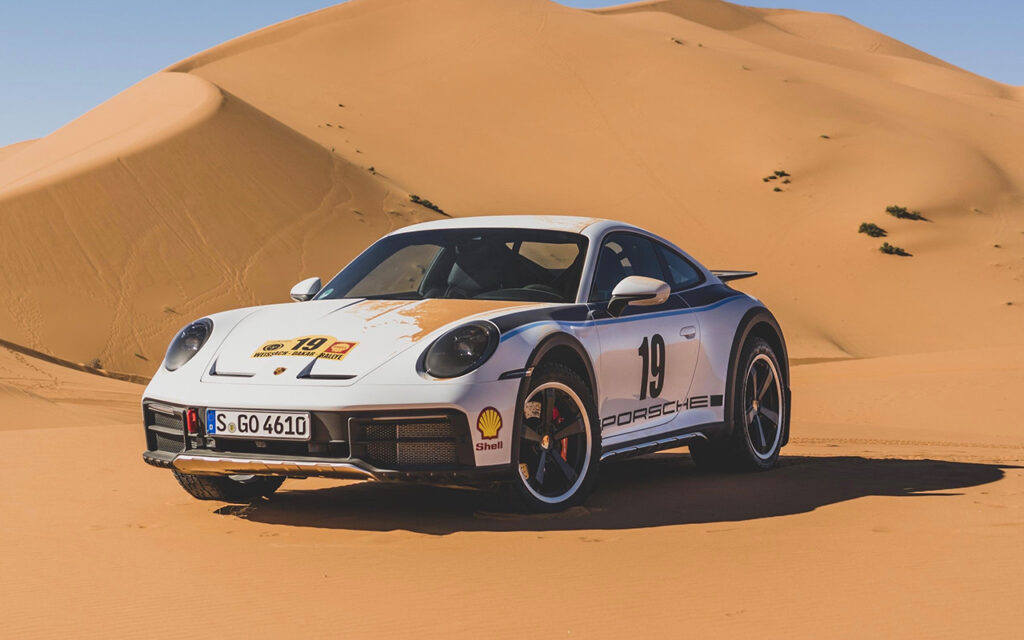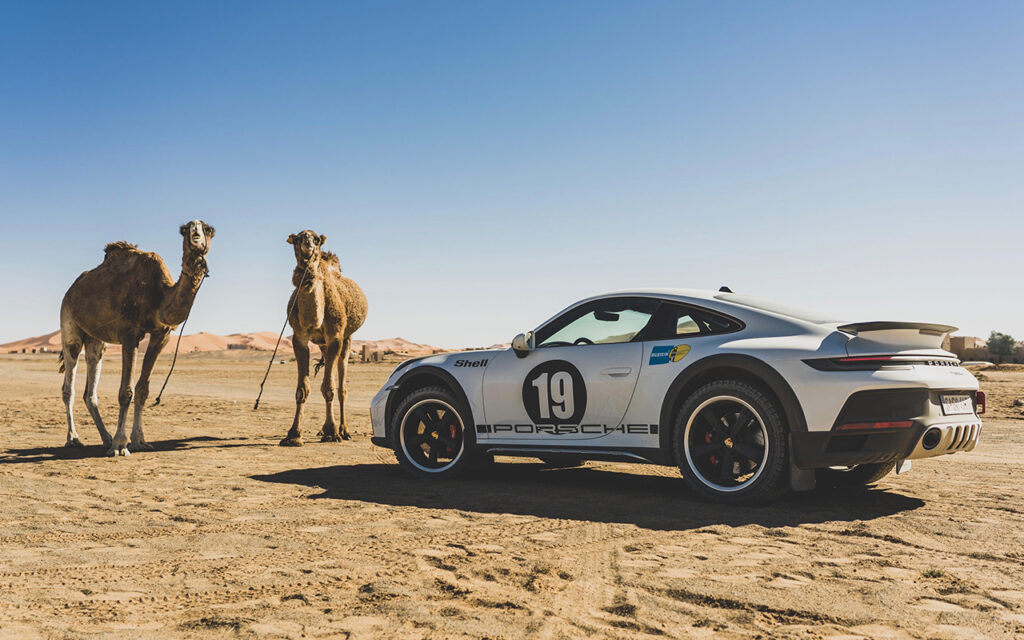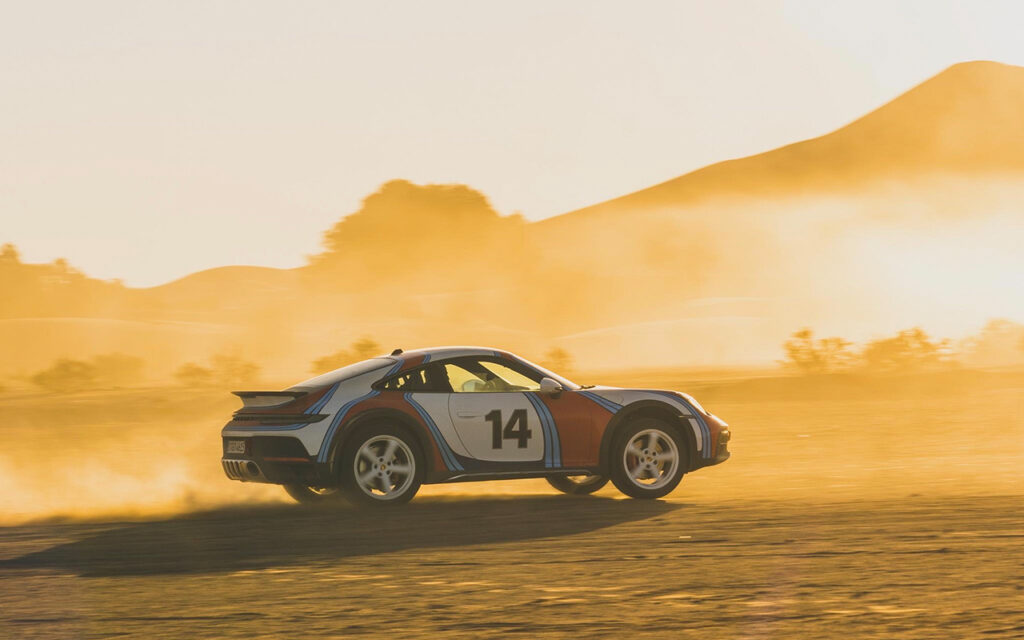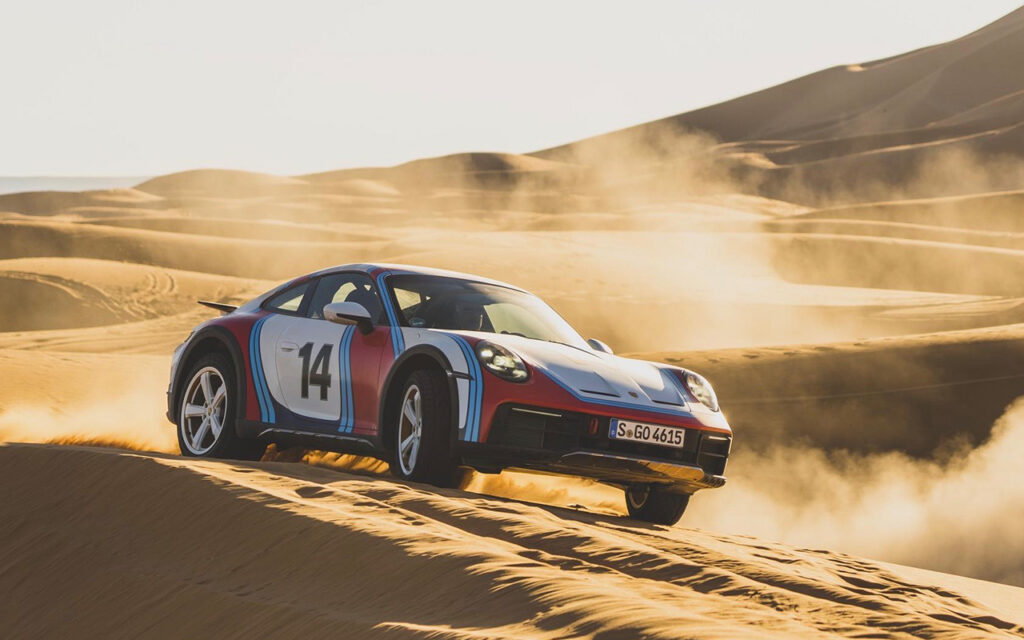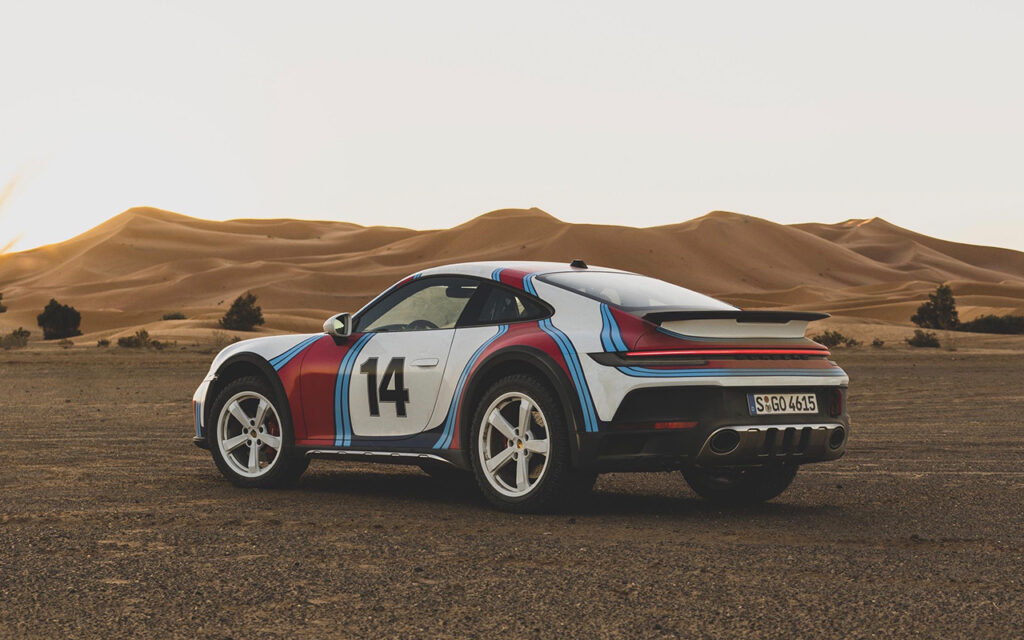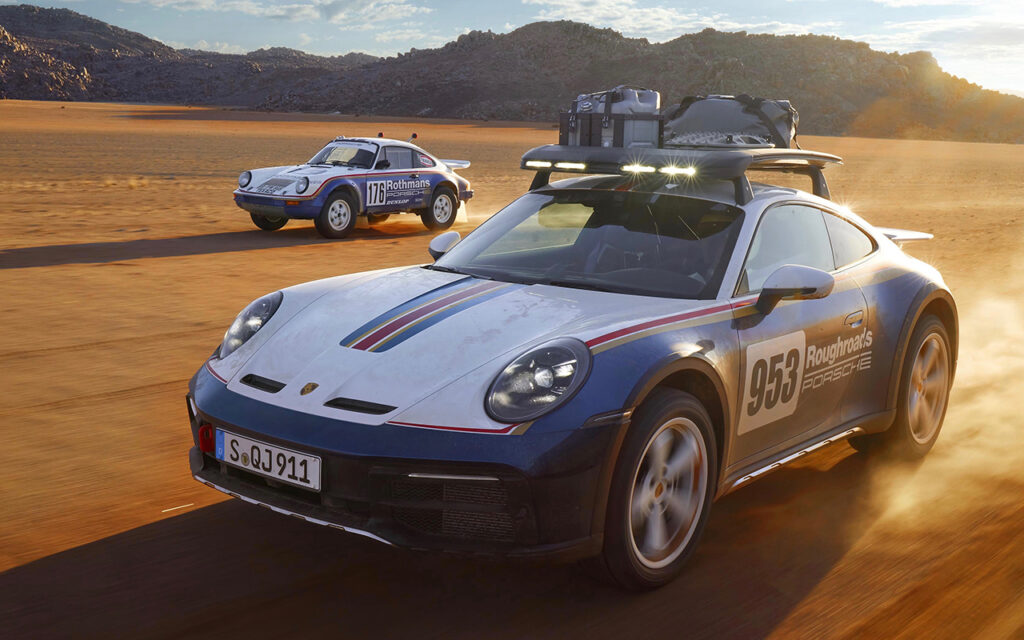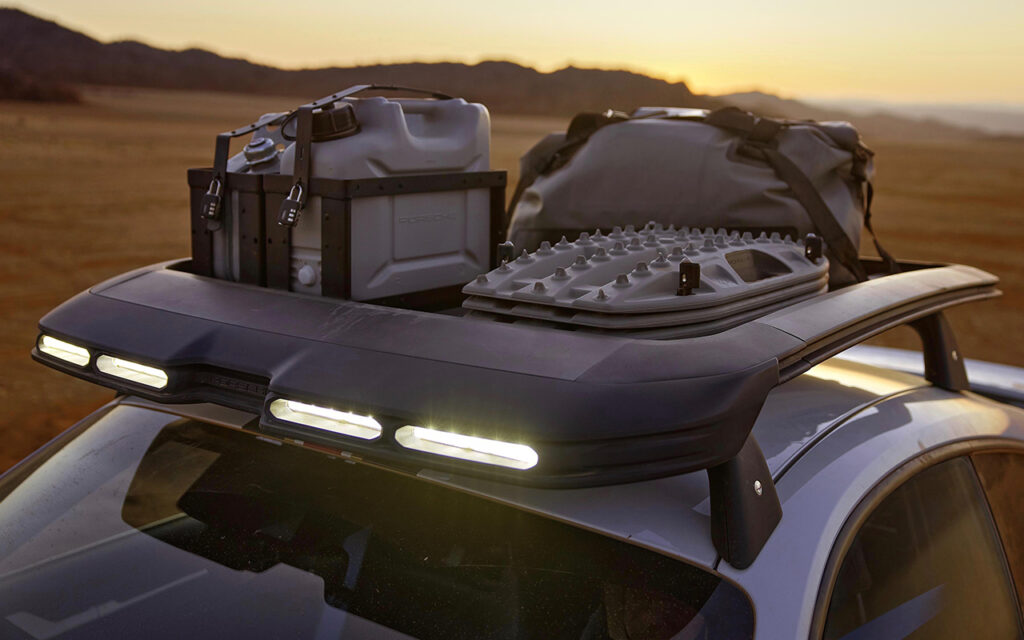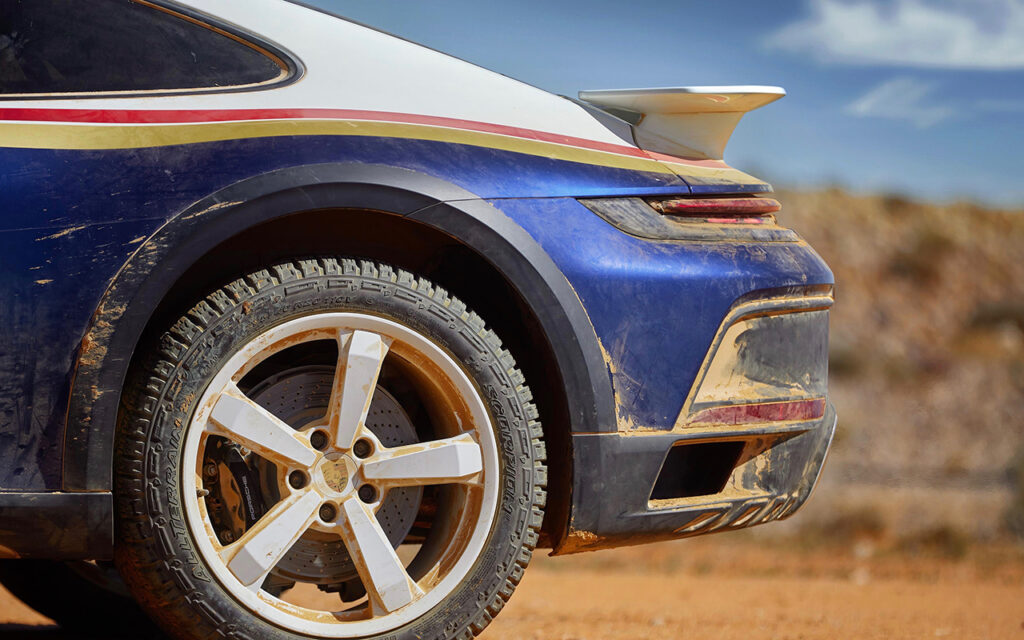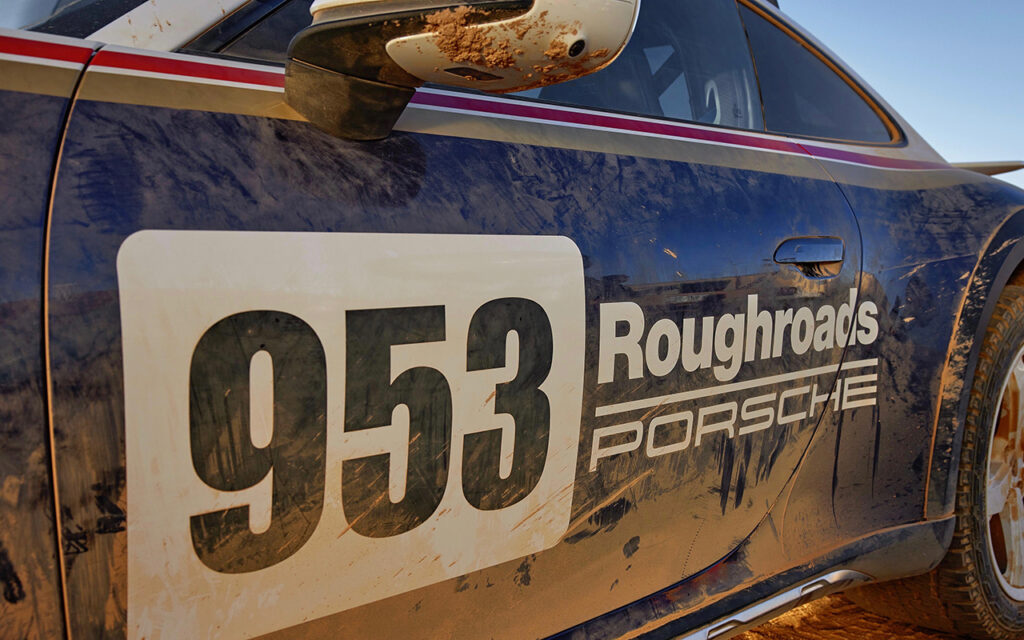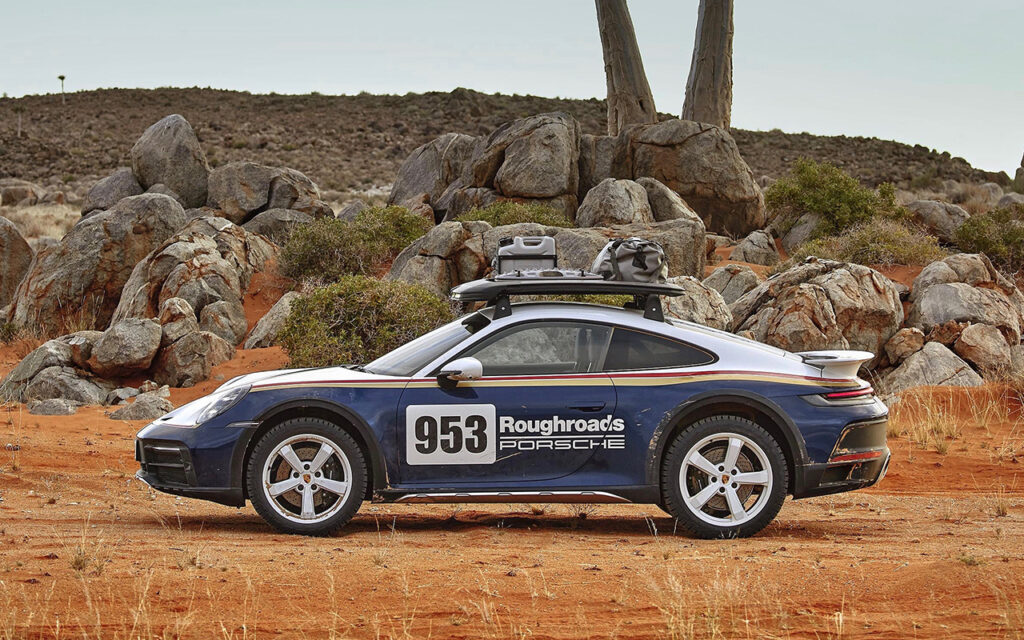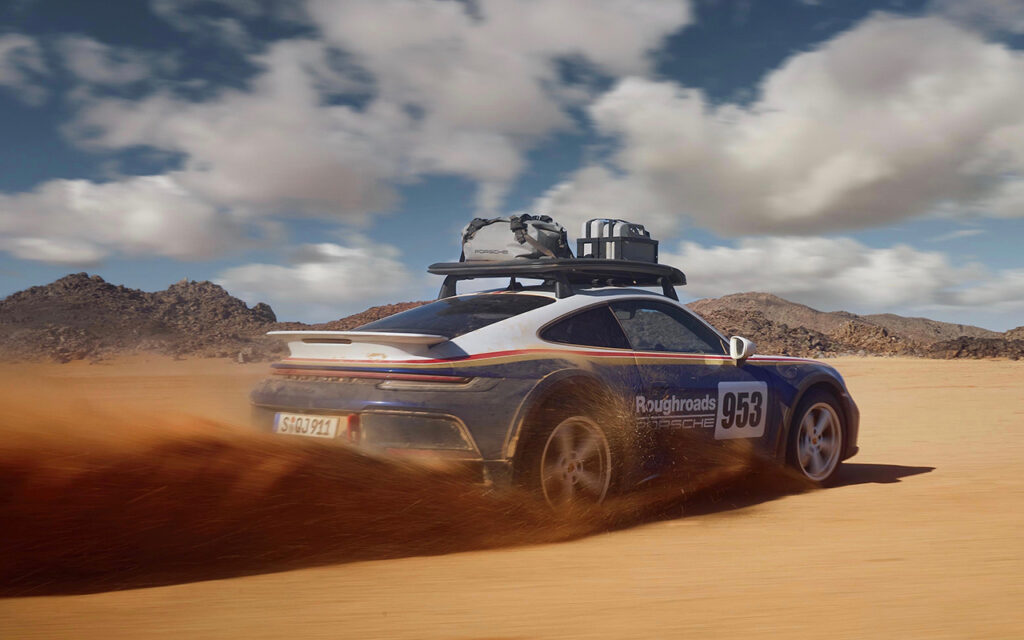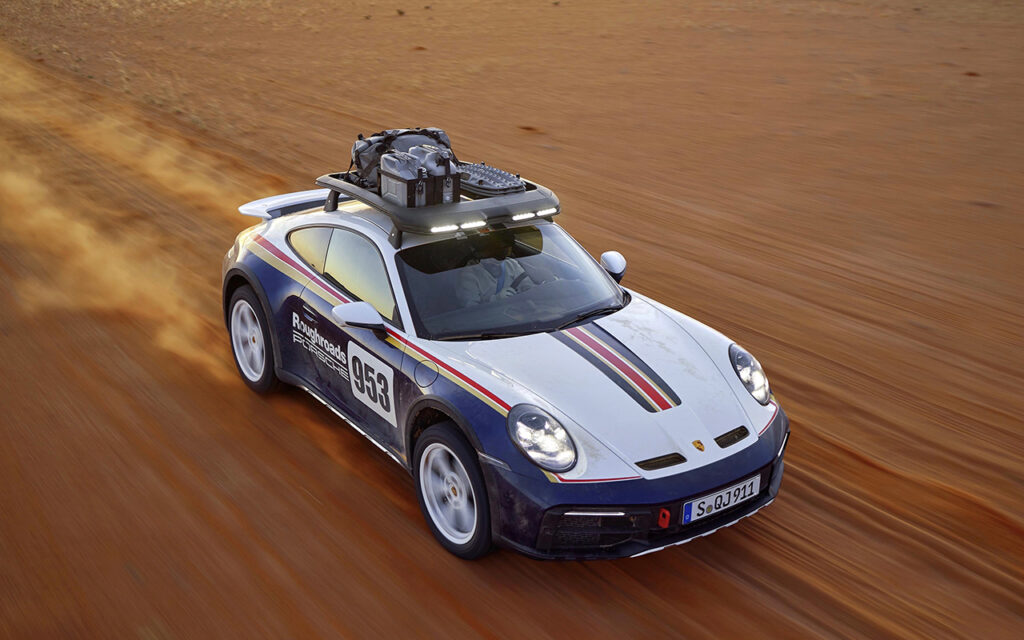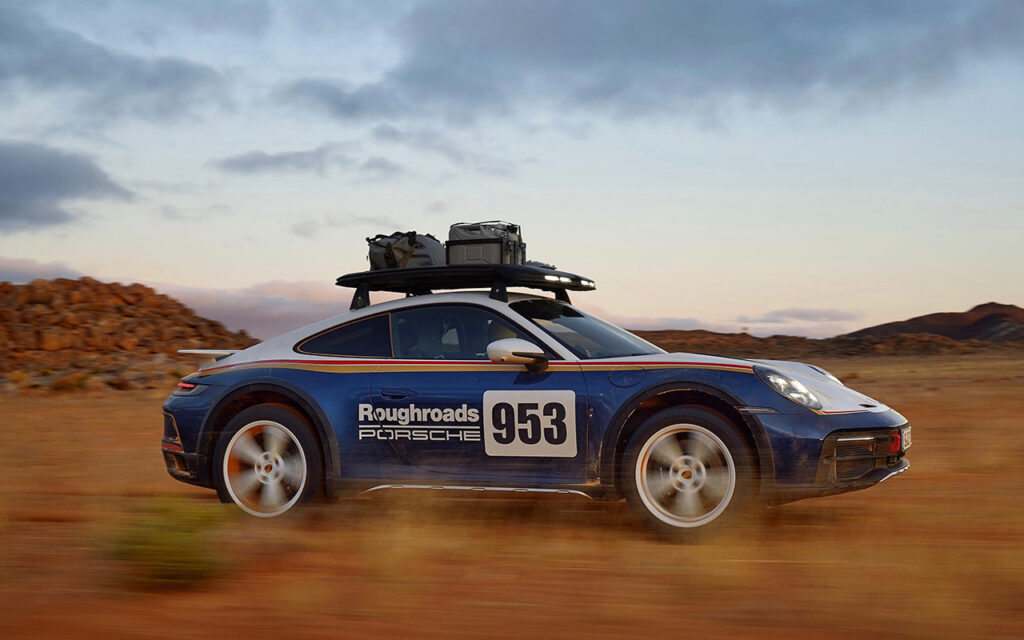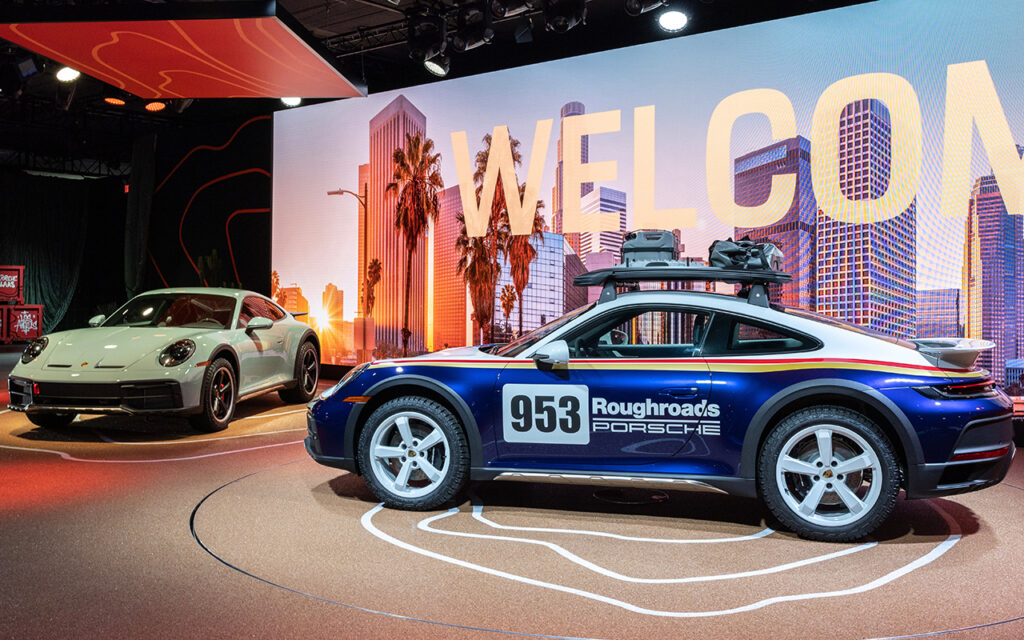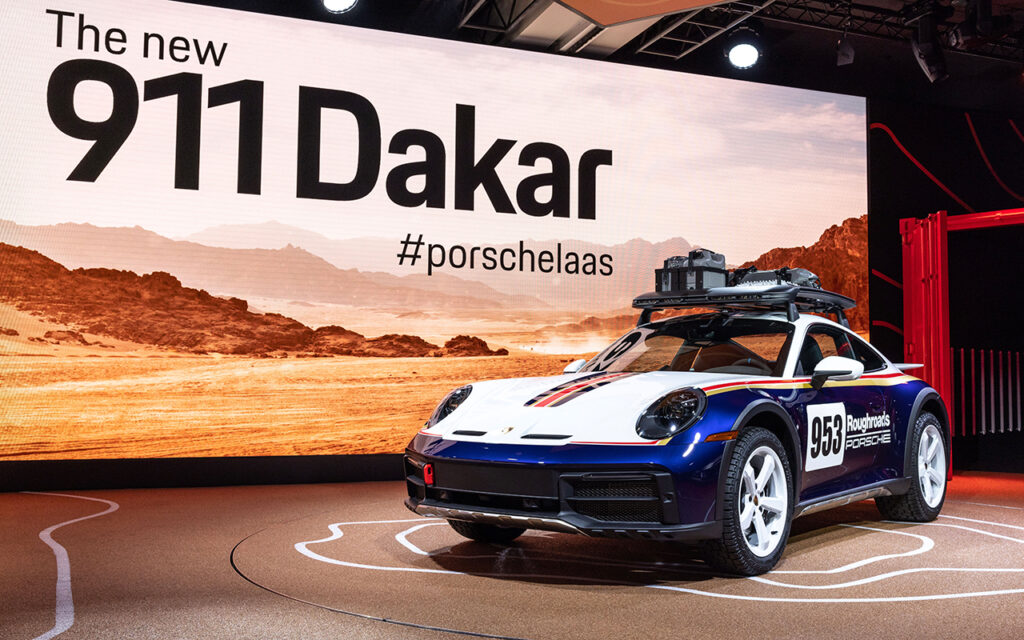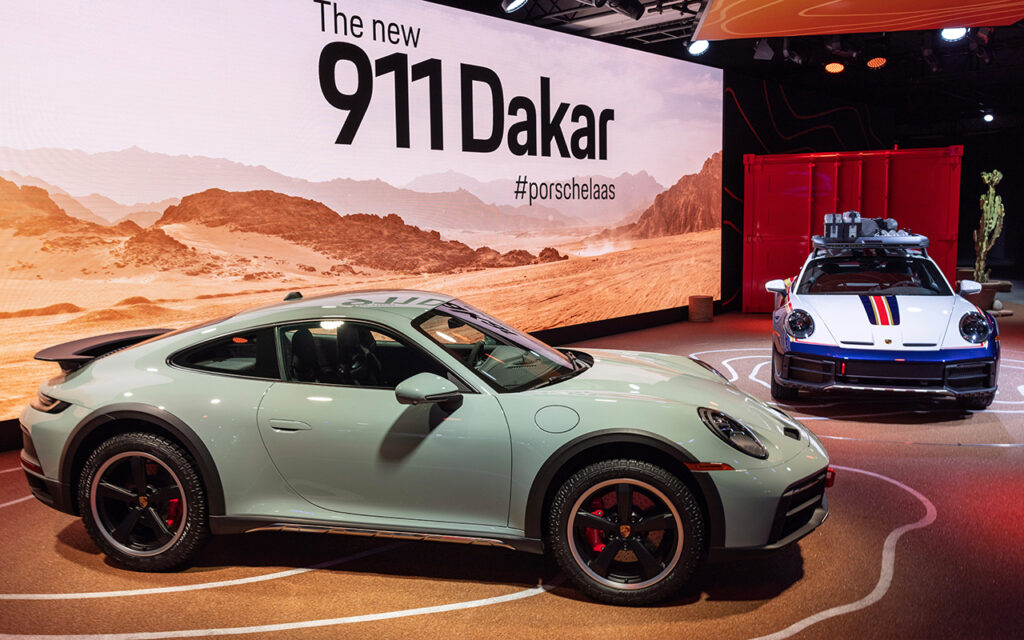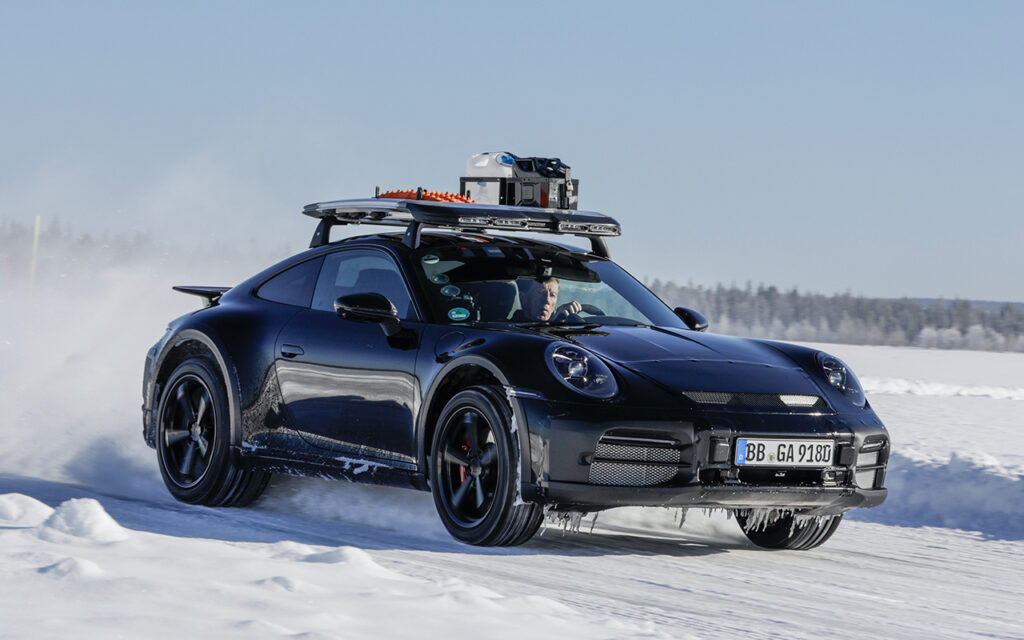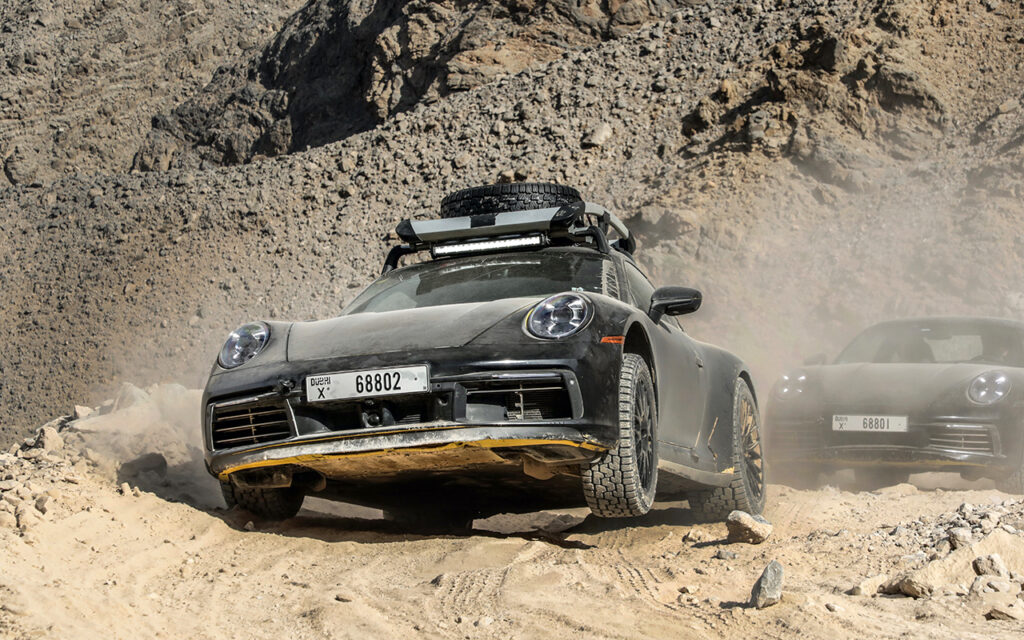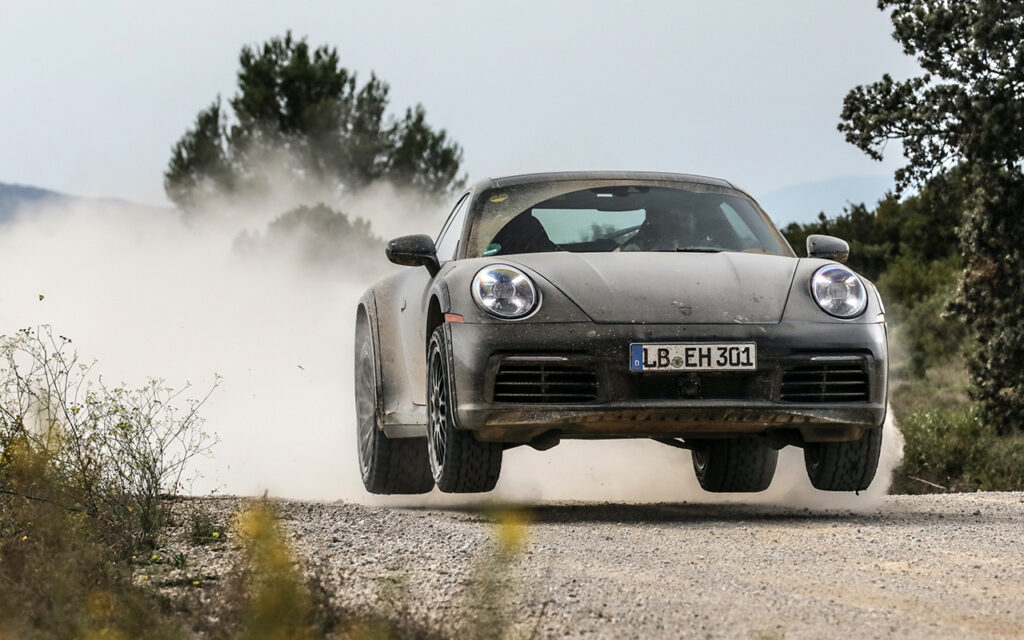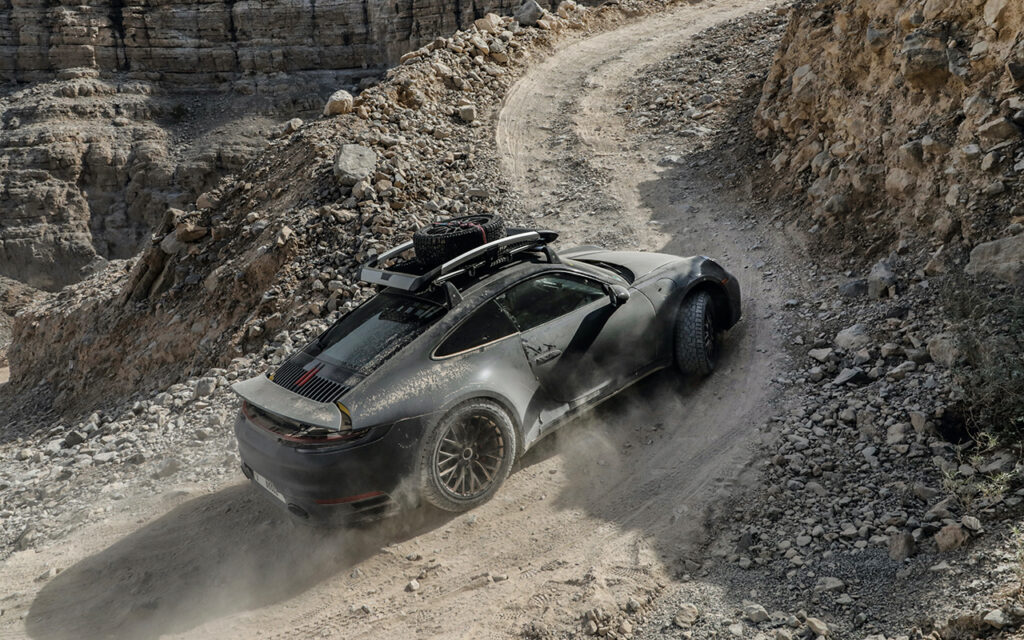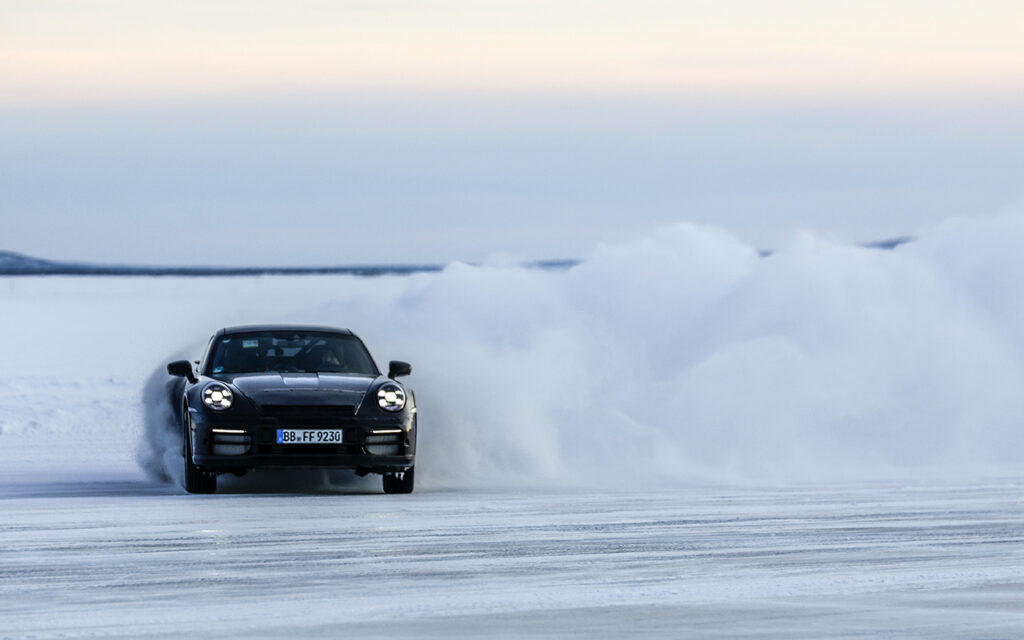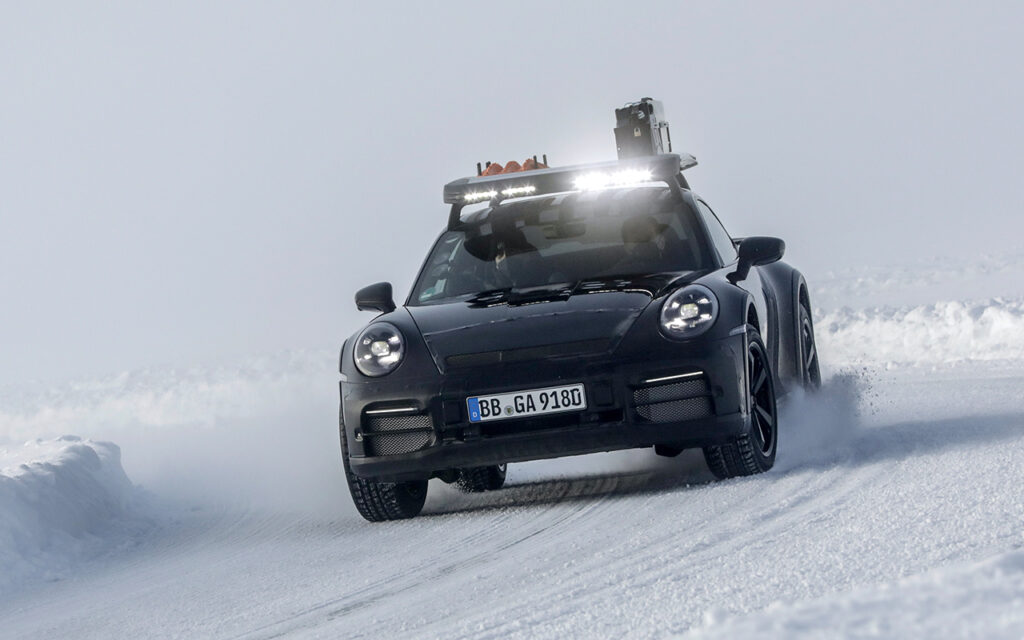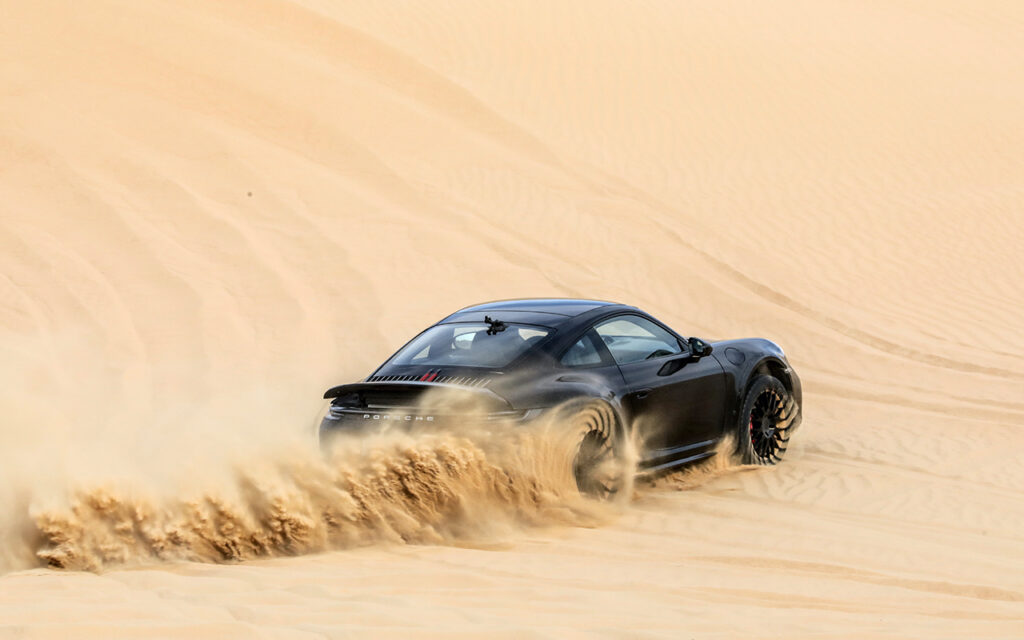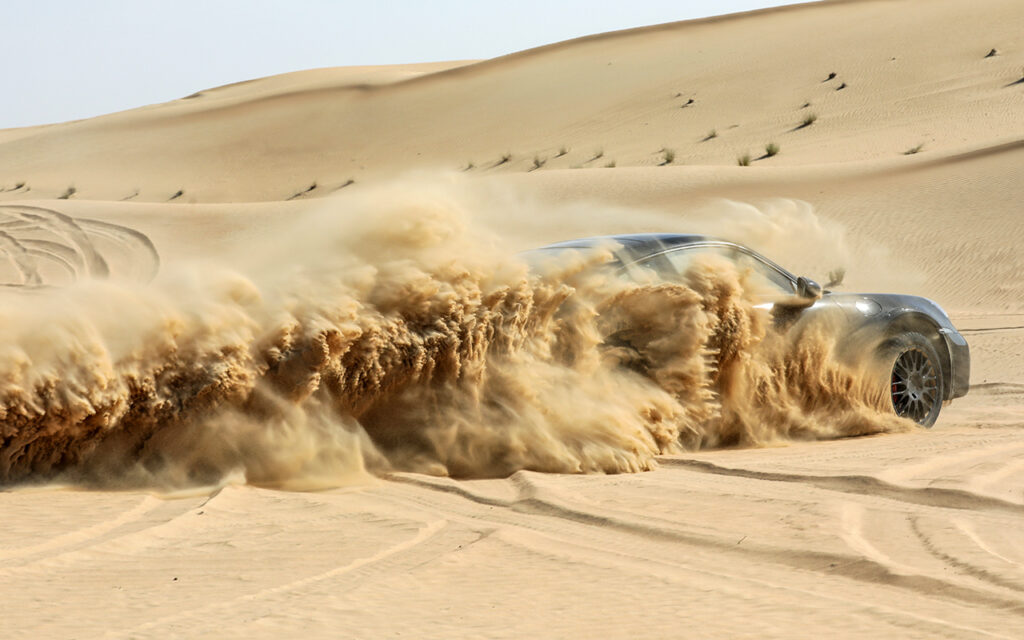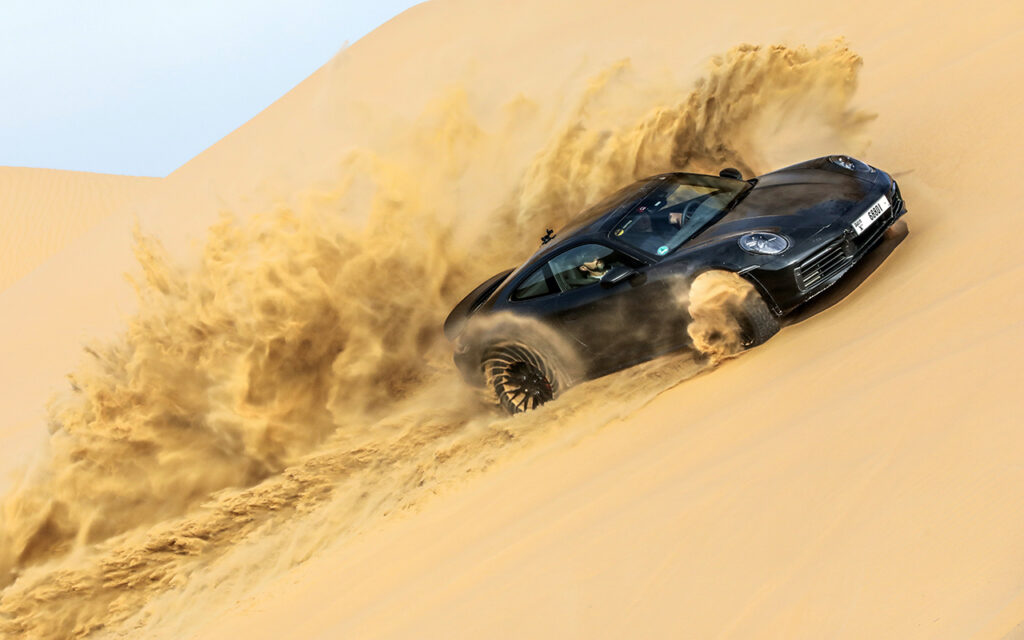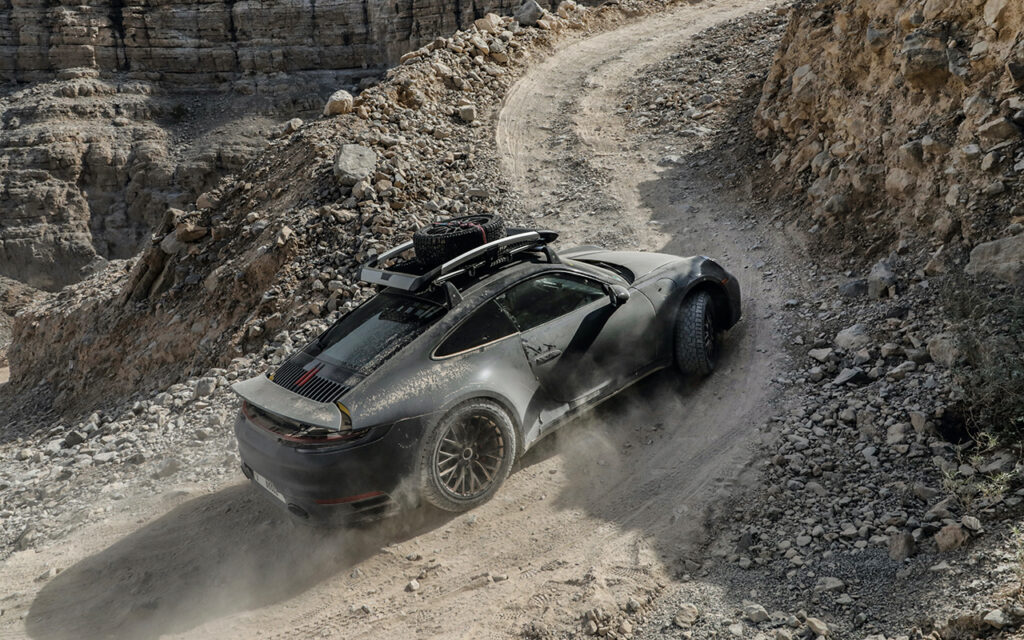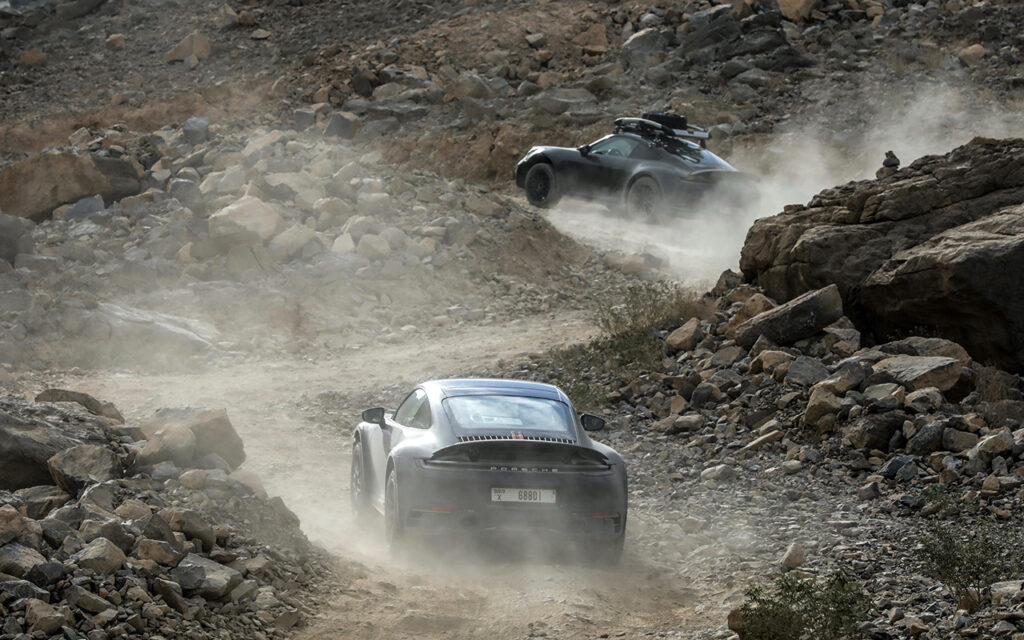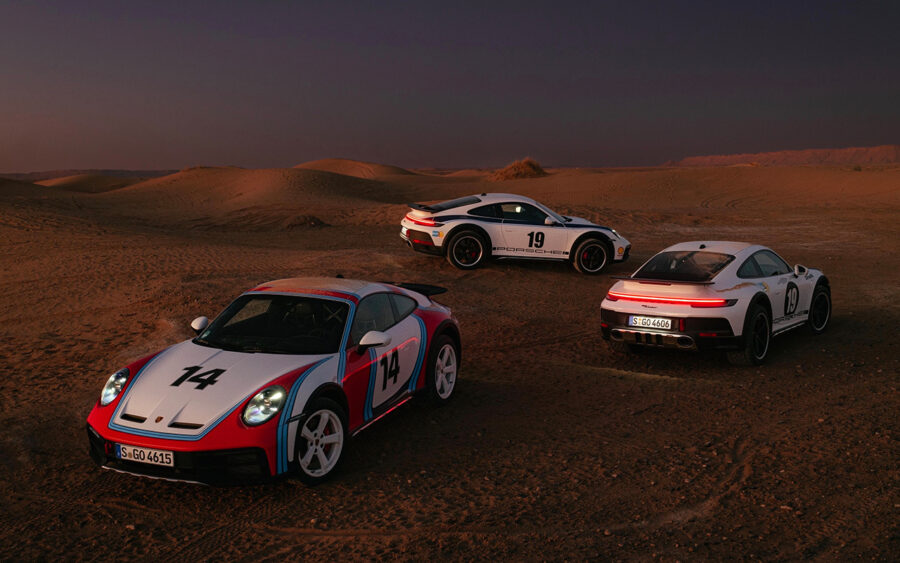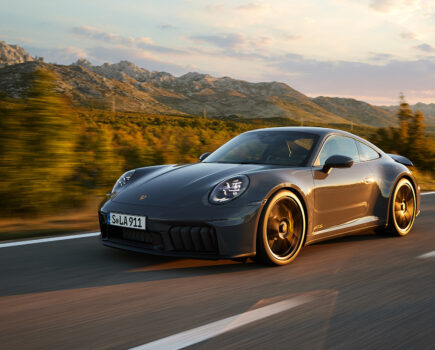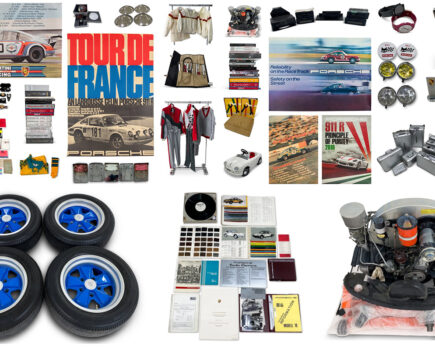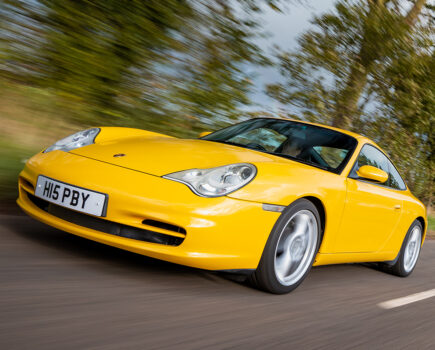Porsche shows off a trio of new historic decal packs for its limited-run, rally-inspired 911 Dakar model
Porsche has revealed a collection of three more retro-inspired wraps for its new 911 Dakar, set to join the Rothmans-inspired livery seen as part of the car’s full reveal in full in November 2022. Each of the three new designs draws from a different milestone in the Porsche 911’s illustrious rallying history.
The first, dubbed Rallye 1971, references the modified Porsche 911 S models that competed in the East African Safari Rally that year, specifically the number 19 car that achieved a 5th-place finish with Polish drivers Sobiesław Zasada and Marian Bień. The design incorporates simple black decals, a rally plaque and a large number on the side doors.
The Rallye 1974 livery pays homage to the 911 Carrera 2.7 RS campaigned by Swedish driver Björn Waldegård in that year’s running of the same rally. Blue stripes reference the colours of sponsor Kohne & Nagel and includes Porsche logos on the doors, plus a rally plaque on the nose.
Perhaps the most recognisable of the new collection is the Rallye 1978, which takes its inspiration from the 4th-place 911 SC Group 4 that was also driven by Waldegård. Martini has long provided some of the most iconic racing liveries and its colours are recreated here.
According to Porsche, all decal sets are available ‘ex works’ through Porsche Exclusive Manufaktur. The Rallye 1971 and Rallye 1974 decal sets are also available as Porsche Tequipment from a Porsche Centre. The Rallye 1971 and 1974 sets are priced at £2,9546, while the more elaborate Rallye 1978 set is priced at £4,209.
Each of the new liveries is included in the gallery at the bottom of this article, but for a better look you can now apply each to the 911 Dakar virtually on the Porsche Configurator.

Porsche 911 Dakar details
The new Porsche 911 Dakar is an all-terrain, four-wheel-drive version of the Stuttgart firm’s famous sports car. Previously shown in official teaser images testing in various off-road locations, the car was unveiled in full at the Los Angeles Auto Show on November 16, 2022.
The new car is limited to just 2,500 examples, each of which is likely to be quickly snapped up by collectors and enthusiasts. With a base price of £173,000, the 911 Dakar sits just below the GT3 RS in the range.
Inspired by Dakar-winning versions of the 911 from the 1980s – as well as the more recent trend for ‘Safari’ modified classic 911s – the new 911 Dakar wears its heritage on its sleeve. The optional Rallye Design Package is perhaps the most obvious nod, adding a faux-Rothmans livery among other visual refinements inside and out for a cool £18,434.
The 911 Dakar transformation isn’t just an exercise in nostalgia, however; intended as a serious off-road machine, the new model gets a host of upgrades over the standard 911. It rides 50mm higher than a 911 Carrera, with an extra 30mm of lift available from the standard-fit lift system. This high-level setting can be used both for slowly crossing obstacles and travelling at speeds of up to 170km/h (105mph). The car automatically lowers itself for the sake of stability above this speed.
Serious off-roading requires serious tyres, in this case a set of standard-fit, specially developed Pirelli Scorpion All Terrain Plus measuring in at 245/45 front and 195/40 rear, on 19- and 20-inch wheels respectively. With 9mm of tread, reinforced sidewalls and two carcass piles, Porsche claims the tyres are highly ‘cut-resistant’, offering high performance on and off-road. Conventional Pirelli P Zero summer and winter tyres are optional extras.

Power comes from the familiar 3.0-litre, twin-turbocharged flat-six, here tuned to 480hp and 570Nm; 0-62mph is sorted in 3.4 seconds, with a limited top speed of just over 149mph to take into account those aggressive tyres. There’s no manual gearbox option; the 911 Dakar uses an eight-speed PDK to make full use of its four-wheel drive system. Detail mechanical upgrades include 911 GT3 engine mounts, PDCC anti-roll stabilisation and rear-wheel steering.
Porsche’s affinity with driver-adjustability continues in earnest with the addition of two new driving modes: Rallye and Offroad. The former is best used on ‘loose, uneven surfaces’ and sets the car’s four-wheel drive system up with a rear-wheel bias; the latter jacks up the suspension and maximises traction ‘on difficult terrain and on sand’. The new Rallye Launch Control system can be used in both modes, allowing for ‘impressive acceleration’ while allowing some wheel slippage – perfect for creating some large rooster-tails in the Sahara or your local gravel car park.
Bodywork changes include a lightweight rear spoiler and bonnet, the latter echoing that fitted to the latest 911 GT3 RS; bright red towing lugs feature front and rear, while the plastic-clad flared wheel arches free up room for the car’s chunkier wheels and tyres. Revised grilles to the front are designed to protect against off-road debris.
As anticipated, an optional roof rack is available, complete with a 42kg weight capacity, 12-volt power and integrated driving lights. Porsche’s recent reveal of a roof-top tent for the 911 now makes a bit more sense, with the item now listed as an option for the Dakar.
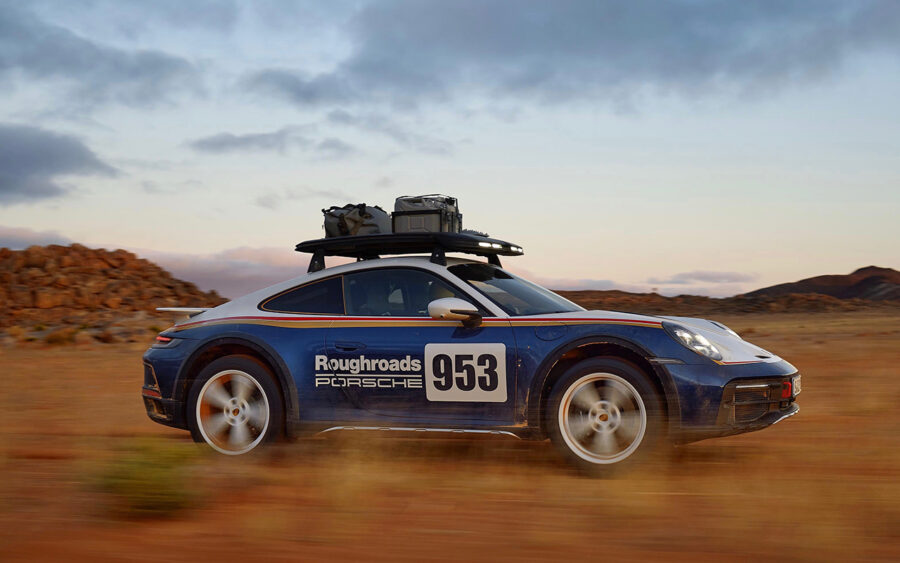
Development and testing
Porsche is clearly proud of the work its engineers and test drivers put in to the development of the new 911 Dakar. The car was tested across the world in a range of adverse conditions to make sure it lived up to its name.
One such location was the test circuit at Château de Lastours, France. The facility is used by Dakar rally teams for testing and incorporates loose gravel and jumps. “I knew what a 911 could do on the road but I was absolutely stunned by how well the car performed here on the loose,” said Porsche works driver Romain Dumas.
Another testimonial came from Porsche’s resident world rally champion Walter Röhrl, who has also been behind the wheel of the 911 Dakar, this time on the frozen lakes of Arjeplog, Sweden. “Everything works so precisely and calmly,” he notes. “No Porsche customer will believe all the things you can do with this car before they’ve driven it themselves.”

With gravel and snow ticked off, the 911 Dakar lived up to its name during testing in sand dunes in the Sahara and Dubai. Porsche says its test drivers took the new car up 50-metre dunes in temperatures of up to 45 degrees Celsius.
“[In the desert] the 911 Dakar can make the most of its conceptual advantages – the combination of low weight, higher ground clearance, a powerful rear-mounted engine and the short wheelbase make for an exhilarating driving experience,” said Frank Moser, vice president for the 911 and 718 model lines.
Porsche brand ambassador Jörg Bergmeister – who recently set an impressive time around the Nordschleife in the latest Porsche 911 GT3 RS – was similarly impressed by the 911 Dakar in testing: “I wouldn’t have thought that a vehicle with such ground clearance and all-terrain tyres would still feel like a Porsche 911 on asphalt,” he said.
